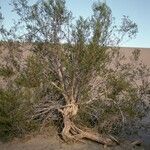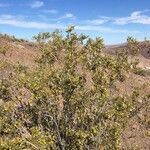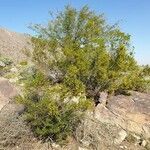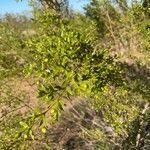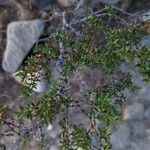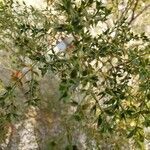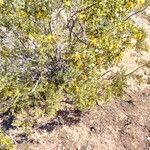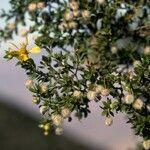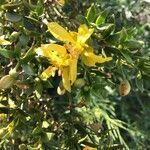Shrubs, divaricately-branched, multistemmed, strong-scented, resinous. Stems reddish when young, becoming gray or black, black-banded, slender. Leaves: stipules spreading, not clasping stem, 1–4 mm, fleshy, resinous; petiole to 2 mm; leaflets green to olive brown, 4–18 × 1–8.5 mm, inequilateral, coriaceous, surfaces glutinous; awn between leaflets deciduous, to 2 mm. Pedicels 3–12 mm, 4–13 mm in fruit. Flowers to 3 cm diam.; sepals ovoid, 5–8 × 3–4.5 mm, appressed-pubescent; petals twisted at claw and appearing propellerlike, 7–11 × 2.5–5.5 mm, claw brownish; stamens 5–9 mm, filaments 4–8 mm, basal scales 2–8 × to 3 mm, 1/2 to as long as filaments; ovary 2–5 mm, stalk 1 mm, densely hairy; style cylindric, 4–6 mm. Schizocarps 4.5 mm diam., pilose-woolly, hairs white, turning reddish brown with age. Seeds 4–5 mm. 2n = 26, 52, 78.
More
An evergreen plant. It is a straggling shrub. It grows 1.8-3.5 m tall and spreads 1.8-3 m wide. It has jointed stems which form suckers. The bark is dark grey to black. The leaves are compound. They are dark green or yellowish green and have 2-3 spear shaped leaflets. They produce a resin which smells like creosote. The flowers are small and yellow. They are 12 mm across.
The flower buds are pickled in vinegar and eaten as a substitute for capers. The twigs are chewed to relieve thirst. The stems and leaves are used as a substitute for tea. A resin from the leaves and twigs delays butter, oils amd fats from becoming rancid.
